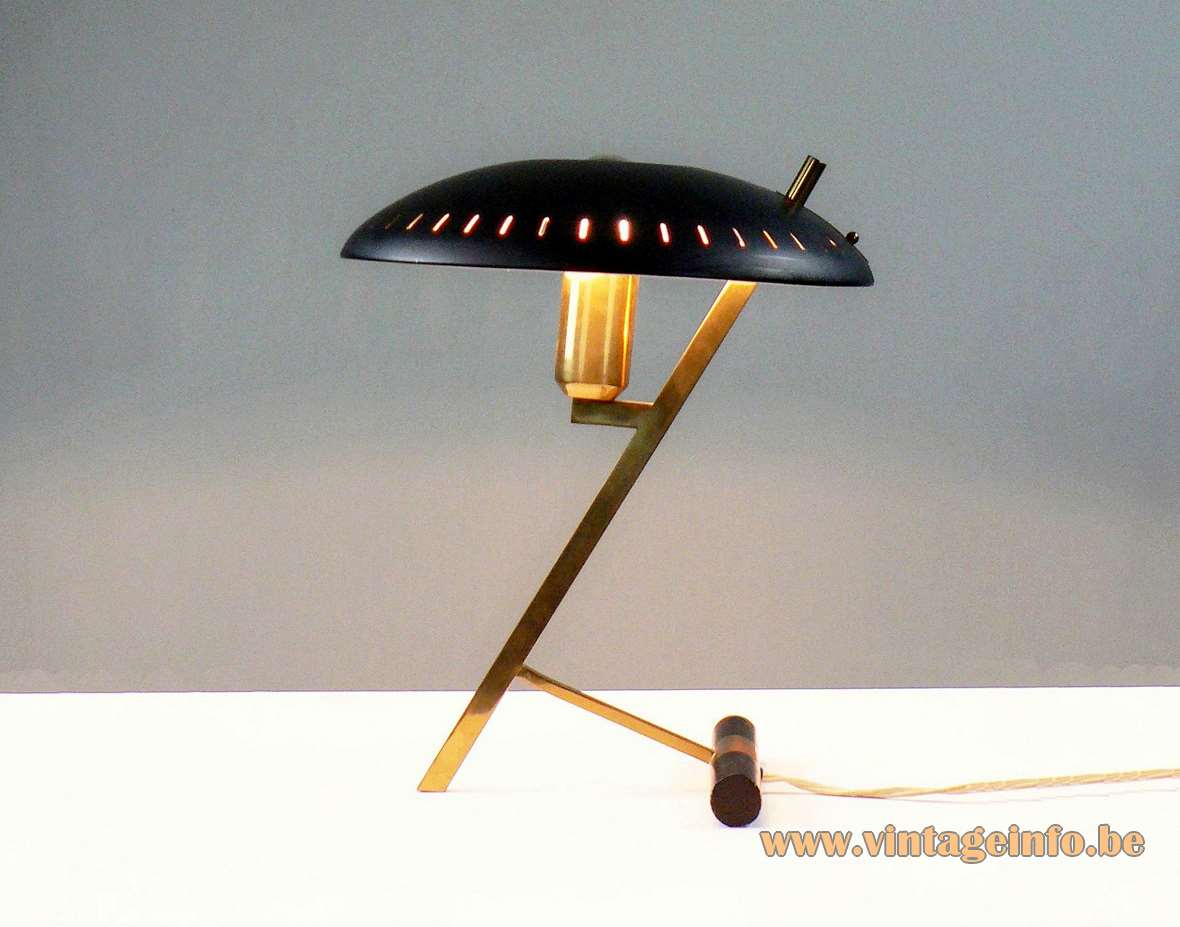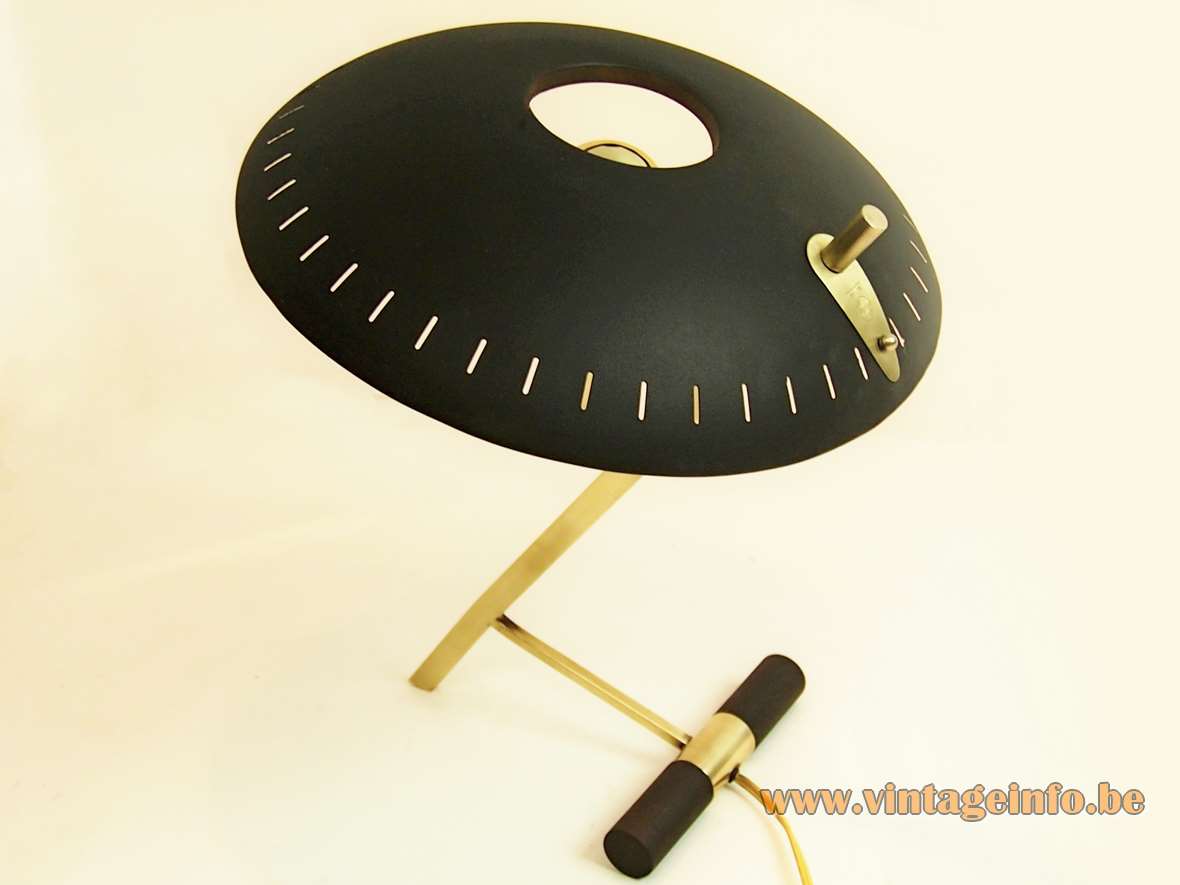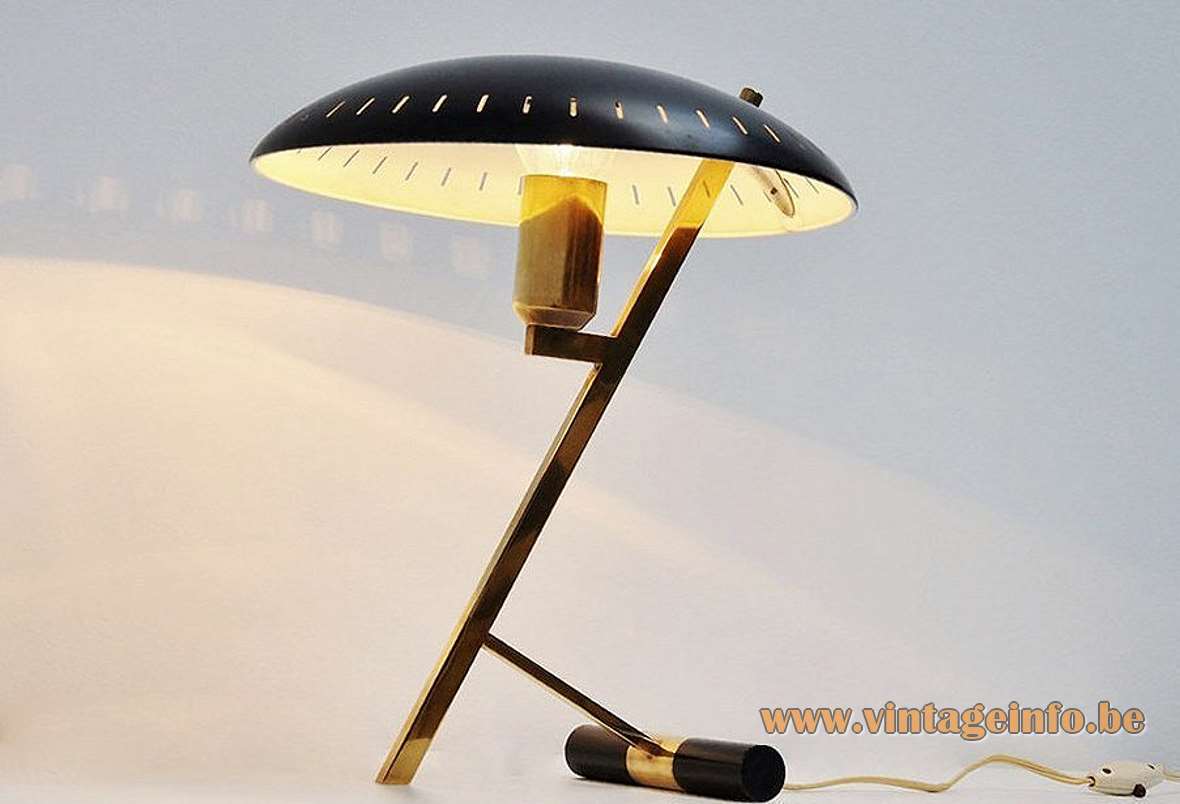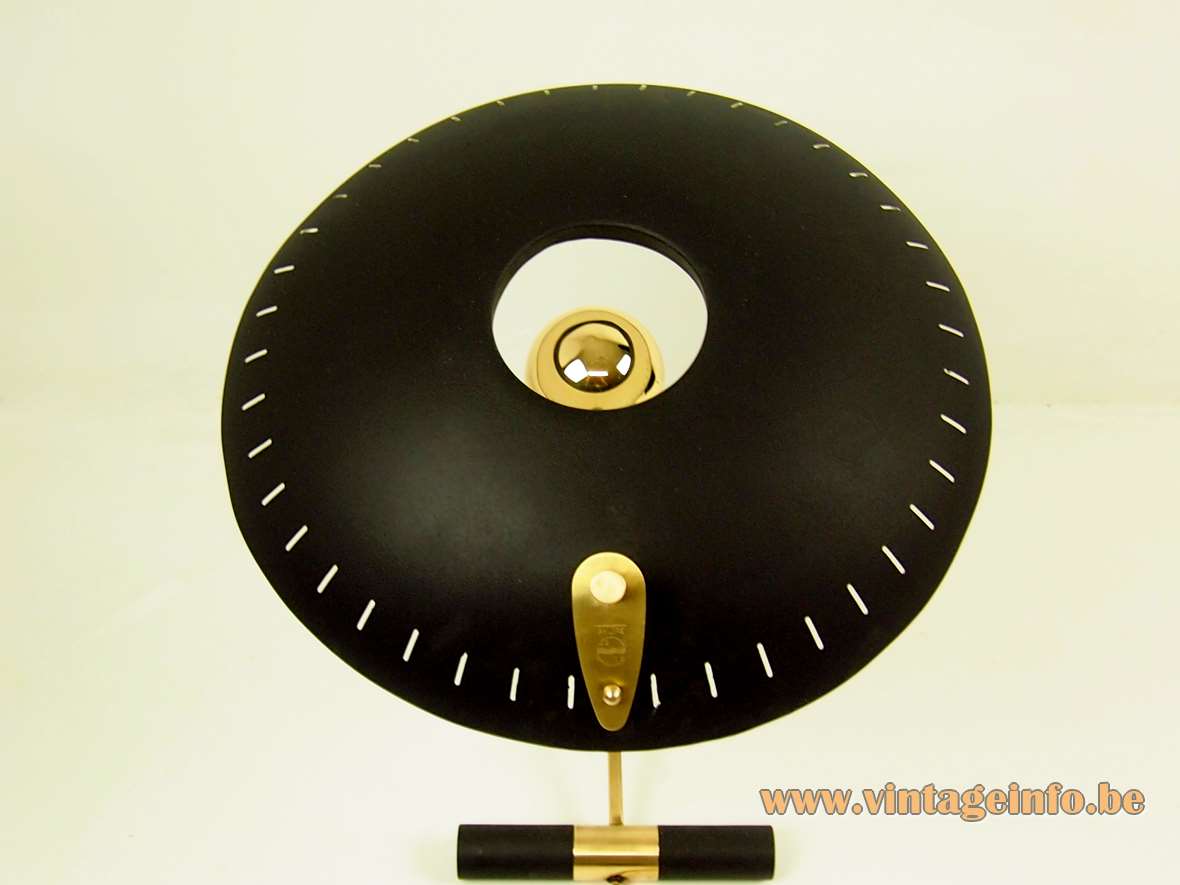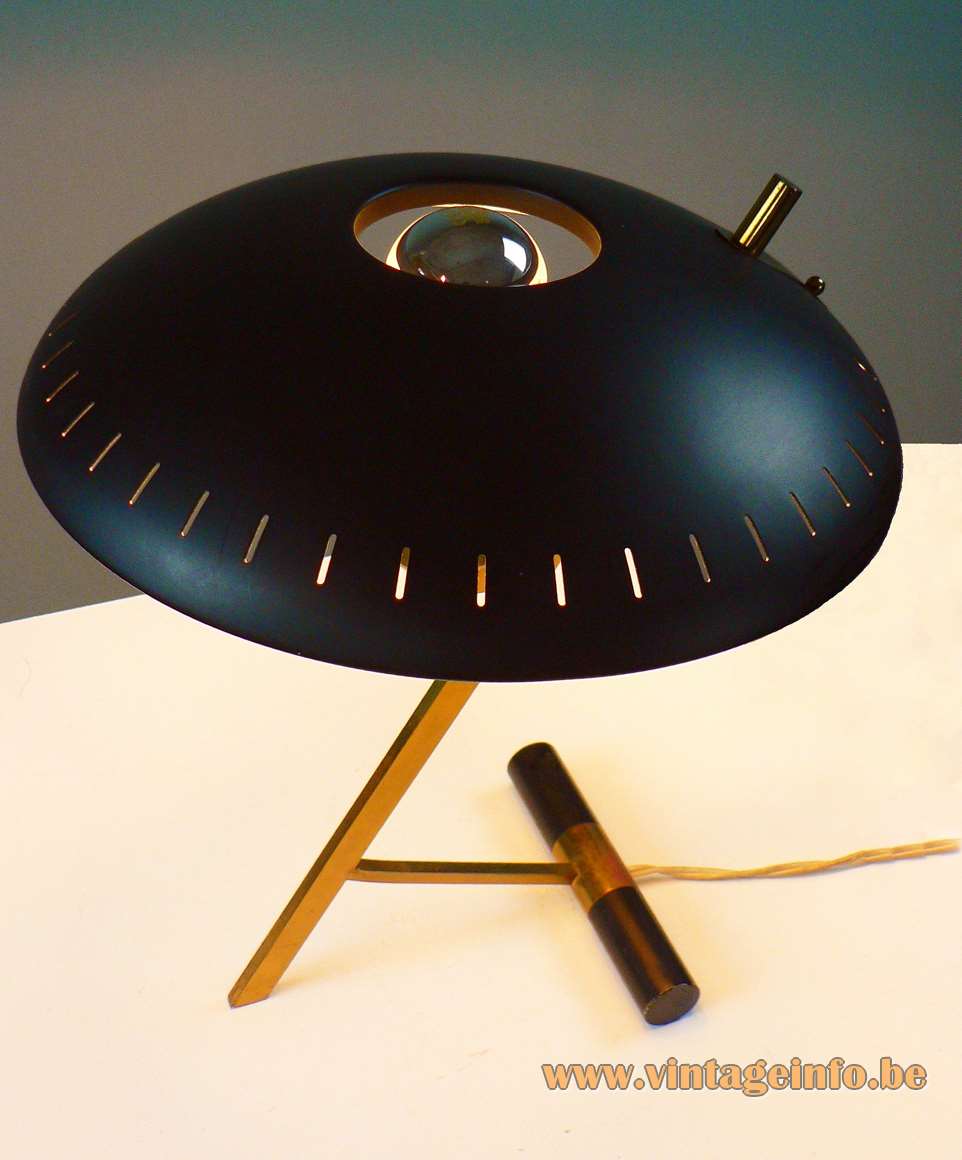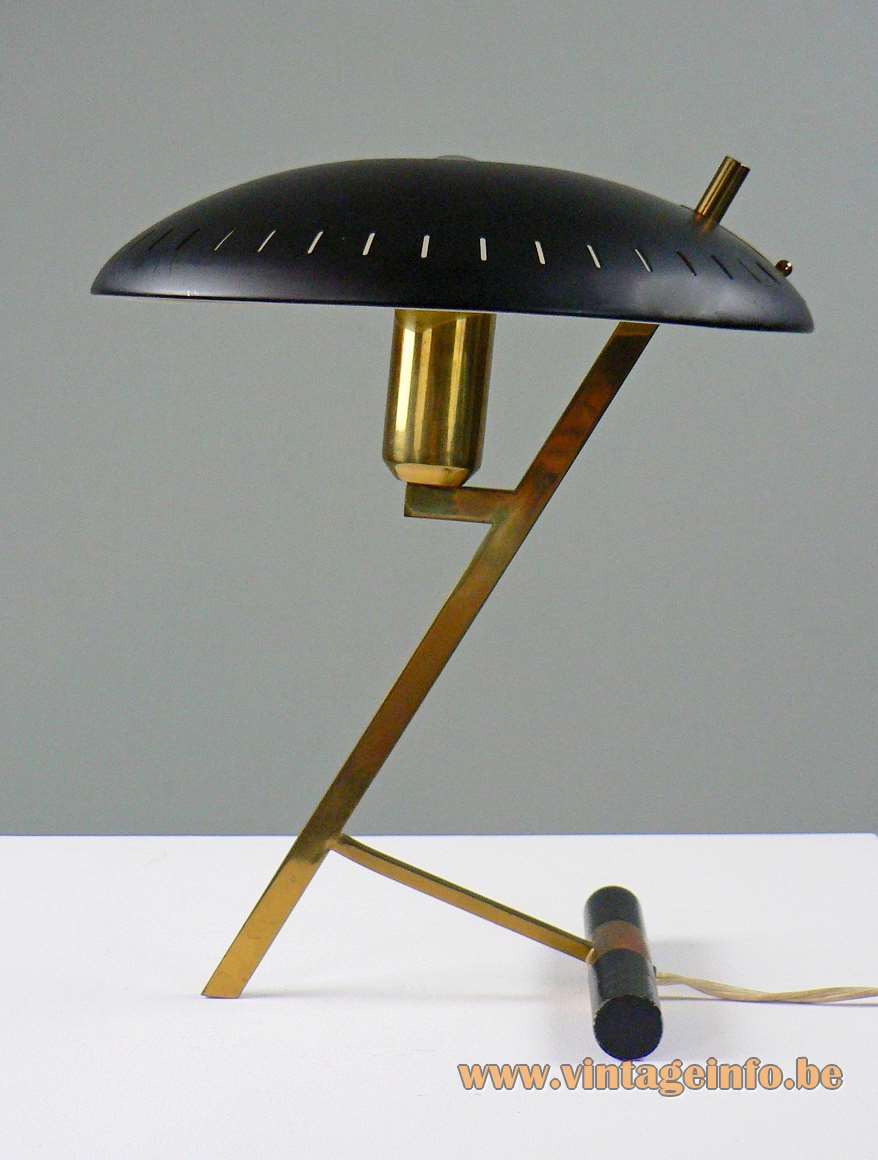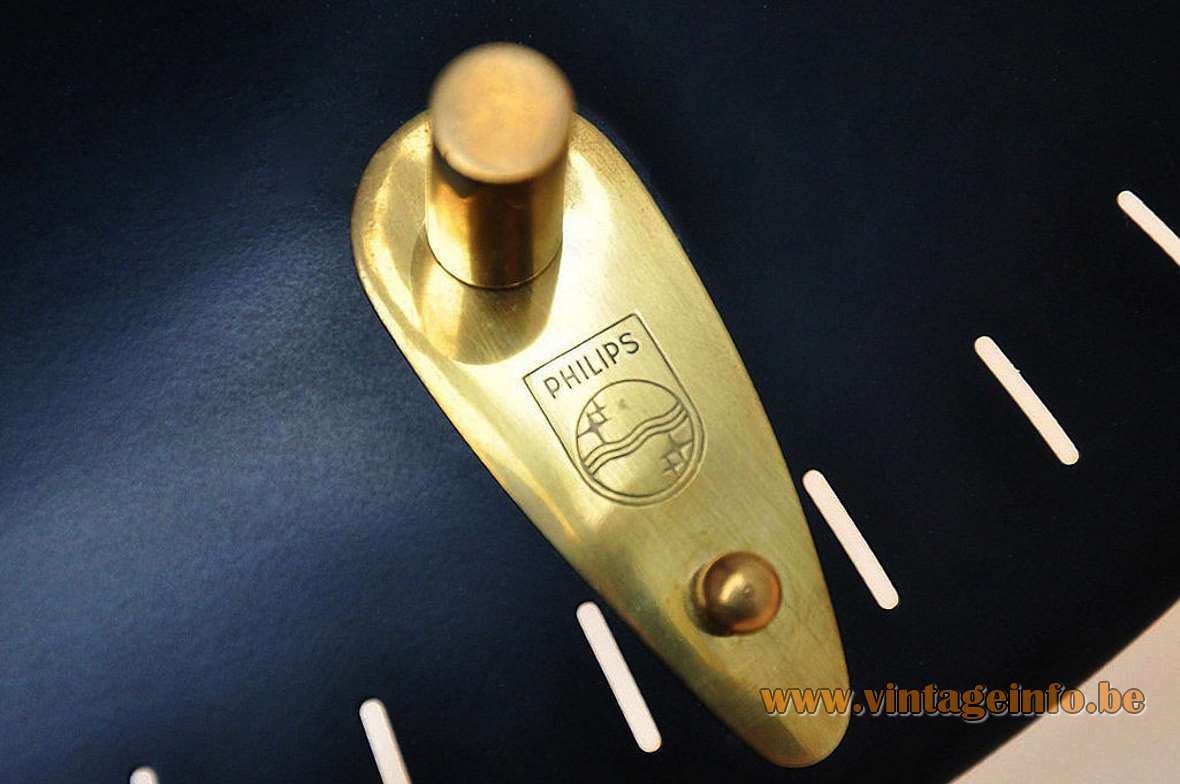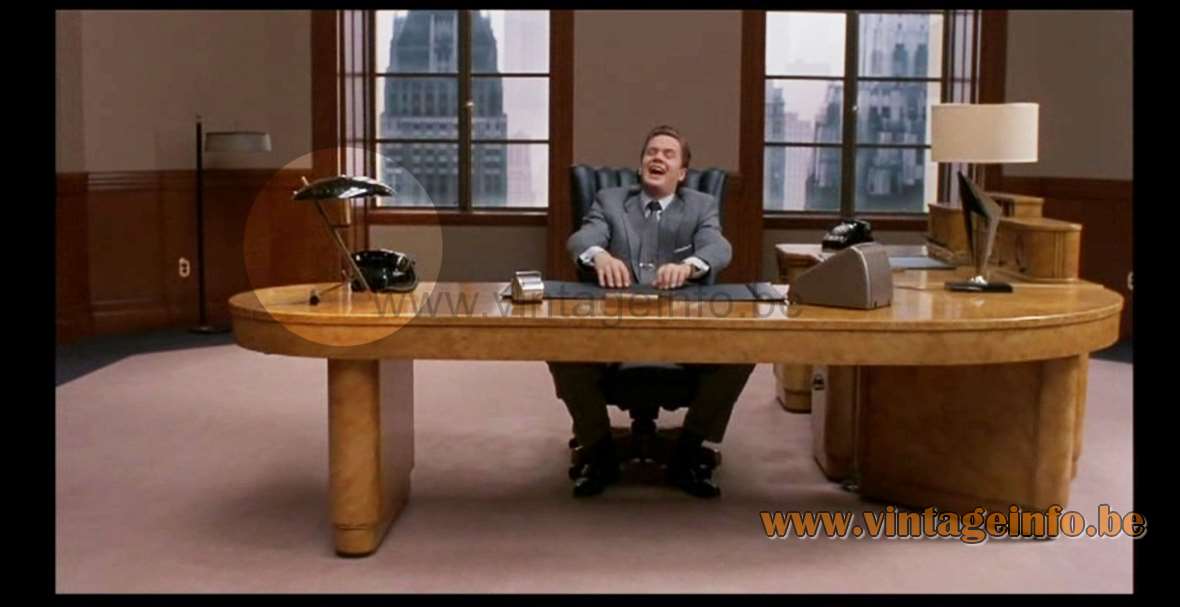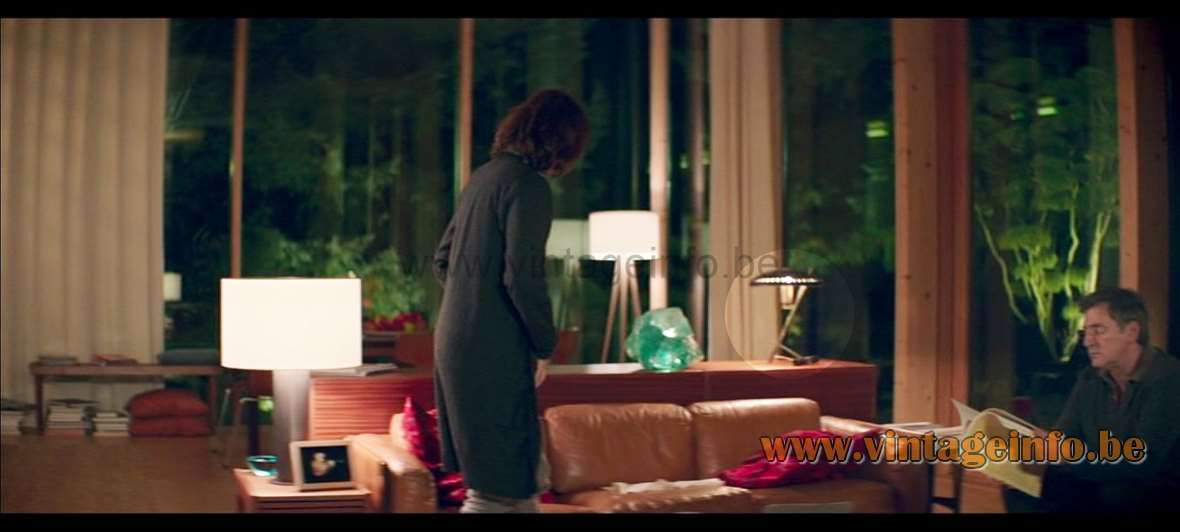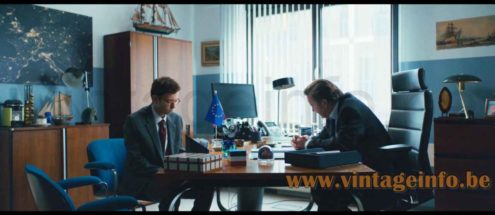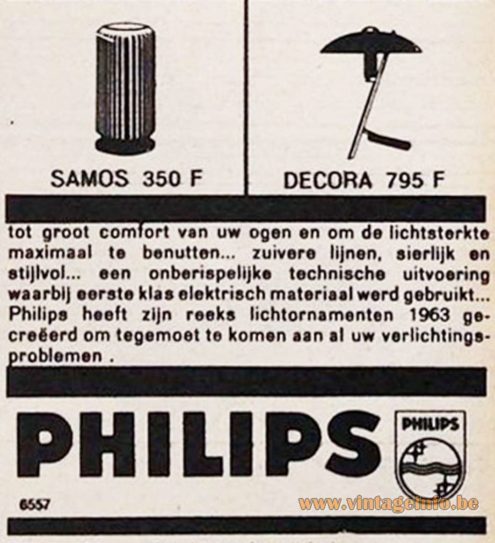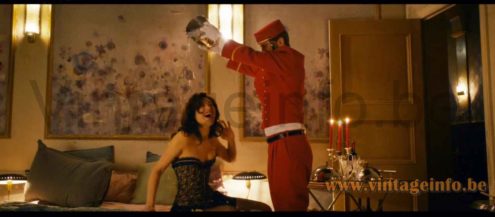Lamps in the movies
A Philips Decora desk lamp was used as a prop in the 1994 film The Hudsucker Proxy. Starring Tim Robbins, Paul Newman and Jennifer Jason Leigh. Produced and directed by Joel and Ethan Coen.
A Philips Decora desk lamp was used as a prop in the French drama film Avant l’Hiver (Before the Winter Chill) from 2013. Starring Daniel Auteuil, Kristin Scott Thomas and Leïla Bekhti. The movie was directed by Philippe Claudel.
A Philips Decora desk lamp was used as a prop in the French, German and Belgian comedy television series Parlement. Here in series 1, episode 1. Starring Xavier Lacaille, Liz Kingsman and Lucas Englander. The two other lamps are probably made by ANVIA (left) and maybe Jumo (middle).
Belgian advertisement from the sixties, price 795 BEF, +- 20 Euro/dollar.
Many thanks to Ger for the beautiful pictures and enthusiasm.
Many thanks to Volksen for the screenshot of the Parlement TV series.
Philips Decora Desk Lamp
Materials: Black painted thick round brass rod counterweight used as a base. Rectangular brass slats & 1 round brass rod. Mat black painted aluminium UFO style mushroom lampshade, painted white on the inside. It is perforated with many elongated slots and a hole in the middle. Brass socket holder. Bakelite E27 socket.
Height: 40 cm / 15.74”
Width: ∅ 35 cm / 13.77”
Electricity: 1 bulb E27, 1 x 100 watt maximum, 110/220 volt.
Any type of light bulb can be used. A big silver cup/crown/bowl bulb is preferred. There is a difference in sizes between 60 and 100 watt incandescent light bulbs. The 100 watt bulb is preferred.
Period: 1950s, 1960s – Mid-Century Modern.
Designer: Louis Christiaan Kalff.
Manufacturer: Philips, Eindhoven, The Netherlands.
Other versions: The Philips Decora desk lamp exists in several colours. Made in some slight variations over the years.
Often named Z-lamp, the reason is clear. The real name is Decora. It was designed in 1956 by Louis Kalff. The successor of the Decora desk lamp is the Diplomat. It has a straight lampshade, not curved and it is without the elongated slots. It was made from the late 60s until the early 80s. You can find it over here on Vintageinfo. Same desk lamp, different lampshade.
Koninklijke Philips N.V.
Inspired by the fast-growing electricity industry and the promising results of Gerard Philips own experiments to make reliable carbon filaments, Frederik Philips (his father) financed the purchase of a modest factory in Eindhoven, The Netherlands in 1891. Frederik Philips was a Jewish banker based in Zaltbommel.
In 1895, after difficult first four years and near bankruptcy, Anton Philips joined the company. He was Gerard’s younger brother. With Anton’s arrival, the family business began to expand rapidly. The brothers changed their family business by founding the Philips corporation. They laid the foundations for the later electronics multinational.
A day before the German invasion in the Netherlands on 9 May 1940, the Philips family fled to the United States of America. They took a large amount of the company capital with them.
Operating from the US as the North American Philips Company, they managed to run the company throughout the war. After World War II the company moved back to the Netherlands, with their headquarters in Eindhoven.
Louis Christiaan Kalff (Amsterdam, November 14th 1897 – Waalre, September 16th, 1976)
Louis Kalff was a pioneering industrial designer in the Netherlands during the first half of the 20th century. With a solid background including studies in sculpture, ceramics, furniture design and architecture, he began to work for the Philips company in 1924, department consumer electronics company marketing.
In 1929 he started a department for design of lighting products (LIBU – Lichtadviesbureau (Dutch for light consultancy). Louis Kalff was responsible for the lighting sections of the World Exhibitions in Barcelona, Antwerp and Paris.
As a freelancer, he also designed posters and advertising for the Holland America Line, Calvé, Zeebad Scheveningen, Holland Radio and others. Louis Kalff also designed book covers.
After World War II Kalff kept himself active in industrial design for Philips. After his retirement in 1960, Louis Kalff stayed with Philips as a consultant and architect. In 1961 he was given the direction and execution of the Evoluon building in Eindhoven. It was the last work of the light architect who almost worked for forty years at the Philips group.
Lamps in the movies
Two Philips Decora desk lamps were used as a prop in the 2019 English-language French thriller film The Room. Starring Olga Kurylenko, Kevin Janssens and Carole Weyers.
Links (external links open in a new window)
The complete history of the company on the Philips website
Louis Kalff – Wikipedia (only in Dutch)
The Evoluon building – Wikipedia
Website of the Philips Museum in Eindhoven
The Hudsucker Proxy (1994) – Wikipedia
The Hudsucker Proxy (1994) – IMDb
Avant l’Hiver (2013) – Wikipedia
The Room (2019) film – Wikipedia
Parlement (2020) TV series – Wikipedia
Parlement (2020) TV series – IMDb
